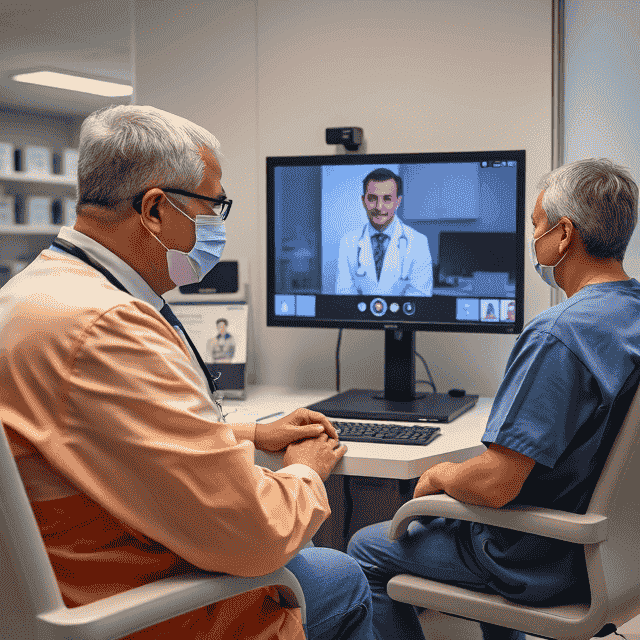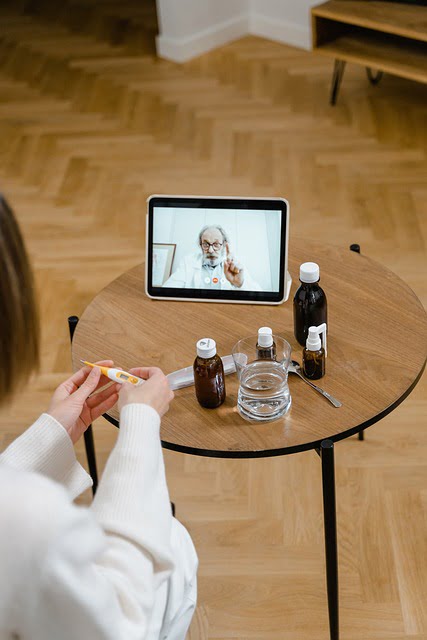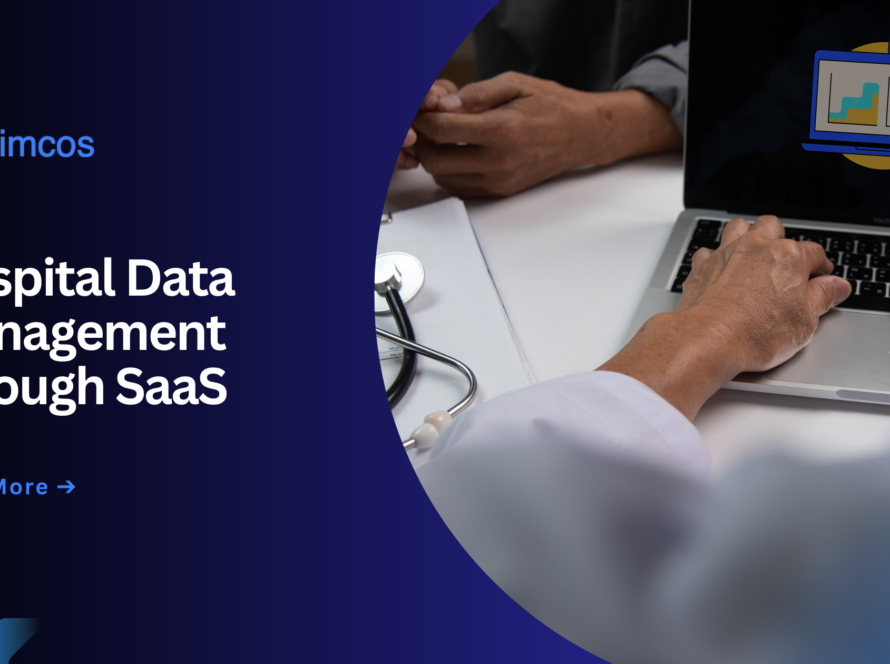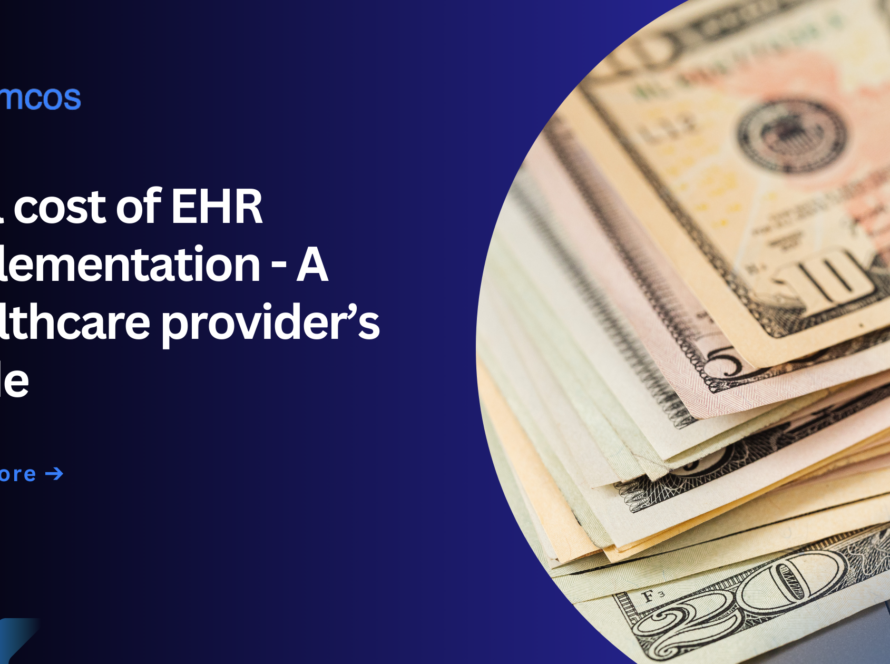AI is changing the game in healthcare by bringing powerful tools that help doctors make better decisions and improve patient care. By integrating AI in healthcare, medicine, healthcare professionals work more efficiently and provide more accurate treatments.
One of AI’s biggest advantages is improving diagnosis. AI-powered systems quickly analyze huge amounts of patient data like medical records, scans and genetic details with incredible accuracy. This helps spot patterns and potential health issues that might be missed by the human eye, leading to earlier and more precise diagnoses.
Because of this, patients can get the right treatments sooner, improving their overall health.
It is transforming how doctors choose treatments. With machine learning, AI sifts through thousands of clinical trials, research studies and treatment outcomes to recommend the best, evidence-based options for specific conditions. This makes patient care more effective and tailored to individual needs.
With 91% of business leaders confident in its role in tracking COVID-19 cases, 94% in vaccine development and 88% in vaccine distribution. As AI becomes more integrated, even more use cases will emerge.Explore the top 10 AI use cases in healthcare, featuring real-world examples in patient care, medical imaging, diagnostics, research, healthcare management and automation.
1. AI for Diagnosis & Prescriptions
AI chatbots help patients figure out mild conditions or assist doctors by analyzing symptoms, medical history and test results. A study tested ChatGPT’s accuracy in diagnosing five common orthopedic conditions over five days. Researchers asked the same questions repeatedly and rated the answers as correct, partially correct, incorrect or just a list of possible diagnoses. The results were mixed, ChatGPT’s accuracy and consistency varied. It also wasn’t always firm in recommending when to see a doctor. While AI can be a helpful first step, relying on it for self-diagnosis without medical advice carries risks.

2. Patient Data Analytics
AI in Healthcare analytics solutions turn clinical data into useful insights for healthcare professionals to make better decisions. The insights using ai in healthcare improve patient care, identify at-risk populations and optimize resource use. The result? Lower healthcare costs and better patient outcomes.Real-life Example: Zakipoint Health offers a dashboard that gives a clear view of healthcare risks and costs for each member. By using predictive analytics, the platform helps healthcare systems spot cost drivers and risk factors which leads to better health outcomes and cost savings.
3. AI in Medical Imaging Analysis
Medical tests produce a huge amount of visual data including MRI scans, ultrasounds, cardiograms and CT scans. Analyzing these images takes a lot of time and effort from medical professionals. But AI is making the process faster and more efficient.
AI-powered systems help automate medical record-keeping and reduce the time spent on administrative tasks. This allows doctors to focus more on critical cases where quick and accurate diagnoses make a big difference in patient outcomes. AI in healthcare also improves diagnostic accuracy by rapidly analyzing large amounts of data and comparing it with a patient’s previous records. Its ability to spot patterns and connections helps medical professionals quickly find key information for better and faster decisions.
4. Remote Patient Assistance
Telemedicine powered by AI has become a major trend in healthcare. It allows remote consultations to make the medical services more accessible, especially for people in remote areas where healthcare is limited. With telemedicine apps, general practitioners can provide real-time advice for non-urgent conditions, helping more patients get the care they need. Many leading companies are developing AI-powered telemedicine software that can analyze symptoms and offer initial diagnoses.
Some apps even use AI with speech processing, so patients are able to ask health-related questions naturally, just like talking to a doctor. This ensures quick and reliable consultations. These apps make it easier for people to get medical advice without relying on online symptom searches. Plus, virtual nurses help by scheduling in-person doctor visits when needed.
5. Personalized Medications and Care
AI helps create customized treatment plans by analyzing a patient’s genetics, lifestyle and medical history. This makes treatments more effective, reduces side effects and cuts healthcare costs by avoiding unnecessary procedures. AI-powered healthcare tools help doctors find the best treatment options based on patient data to improve care while keeping costs down.
Real-life examples: Aitia uses machine learning to match patients with the most effective treatments and Oncora Medical analyzes health data to personalize cancer treatments.
6. AI Surgeons for Precision
AI is changing surgery by giving doctors better control and accuracy especially for tricky procedures. Robotic systems powered by AI don’t have to deal with shaky hands in order to make minimally invasive surgeries safer with lower infection risks and faster recovery times.
A prime example? The da Vinci Surgical System by Intuitive Surgical. This AI-assisted robot has helped with 14+ million surgeries, turning a surgeon’s hand movements into ultra-precise micro-movements. With da Vinci, doctors operate around delicate organs with fewer complications. Patients lose less blood, spend less time in the hospital and recover faster compared to open surgery.
AI is also stepping up in orthopedic surgery. Stryker’s Mako robotic system helps with hip and knee replacements with 94% accuracy. By customizing each procedure to fit a patient’s unique anatomy, Mako ensures implants fit better and last longer for fewer repeat surgeries and a smoother recovery.
7. Comparing Medical Devices and Drugs with AI
AI compares the effectiveness of different medical devices and drugs by analyzing patient data and clinical outcomes. This makes it easier for healthcare providers to choose the best treatments while cutting down on trial-and-error approaches.
Real-life example – 4Quant uses big data analytics and deep learning to pull valuable insights from images and videos to help researchers and healthcare professionals make better decisions. Their platform processes large amounts of visual data with AI to make complex information easier to analyze.
By automating how insights are extracted from imaging data, 4Quant helps users pinpoint important patterns and details that matter most to their research. This is especially useful in medicine, scientific studies, and industries where visual data plays a key role in decision-making.

8. Enhancing Security and Preventing Fraud
Machine learning is majorly used for securing patient data and protecting it from unauthorized access and other threats. AI tracks suspicious activity, like potential hacks or unusual access attempts, helping security teams focus on the most critical issues. AI also keeps an eye on transactions to spot any signs of fraud, such as kickbacks, upcoding, or downcoding. By analyzing data from EHRs, insurance claims, and budgets, algorithms can identify hidden patterns that might go unnoticed otherwise.
With healthcare fraud costing around $68 billion USD annually in the U.S., catching fraud early saves a lot of money which can then be reinvested in medical research, better treatments, and improved care.
Healthcare Benefits from AI
Using AI in Healthcare is making workflows smarter and faster. It helps doctors catch diseases early, create better treatment plans and cut down on paperwork. With machine learning, huge amounts of medical data is analyzed in seconds, spotting patterns that might go unnoticed. AI also boosts security by preventing fraud and keeping patient records safe. As technology keeps improving, AI is set to make healthcare more accessible, affordable and effective for everyone.
a) Healthcare is more Accessible
AI is making healthcare more accessible by reducing the barriers to quality medical care. Telemedicine platforms powered by AI provide remote consultations, helping individuals in underserved or rural areas receive timely care. AI-driven diagnostic tools enable early detection and treatment without the need for frequent hospital visits, cutting healthcare costs. Chatbots and virtual assistants guide patients with symptom checks and next steps, reducing unnecessary emergency room visits and allowing medical staff to focus on critical cases.
b) Macro and Micro-Level Data Analysis
AI in healthcare processes vast amounts of structured and unstructured health data, identifying patterns that might be overlooked by humans. On a macro level, AI analyzes population health trends, helping policymakers and researchers predict disease outbreaks and allocate resources effectively. On a micro level, AI in healthcare enhances precision medicine by analyzing a patient’s genetic makeup, lifestyle, and medical history to personalize treatments. This data-driven approach allows for better diagnosis, risk assessment, and proactive healthcare interventions tailored to individual needs.
c) Better disease detection
AI-driven imaging tools are revolutionizing disease detection by matching or even surpassing human accuracy in diagnosing conditions like cancer, diabetic retinopathy, and cardiovascular diseases. Machine learning algorithms analyze X-rays, MRIs, and CT scans, flagging potential abnormalities for further review. Deep learning models enhance early detection rates, significantly improving patient outcomes. For example, AI has been shown to detect breast cancer in mammograms earlier than traditional methods, leading to faster treatment initiation and better survival rates.
d) Optimizing treatment options
AI assists doctors in formulating the most effective treatment plans by analyzing patient records, clinical trial data, and treatment responses. It predicts which therapies are most likely to succeed based on a patient’s specific health profile, reducing trial-and-error prescriptions. AI-powered decision-support systems help oncologists determine personalized cancer treatments, while predictive analytics anticipate complications, allowing for early intervention. This leads to more precise, efficient, and effective treatments that enhance patient care and improve overall recovery rates.
e) Support for Patients in Remote Areas
AI bridges the healthcare gap in rural and remote regions by providing virtual consultations, diagnostic support, and AI-powered triage systems. Portable AI-enabled diagnostic devices allow local clinics to perform advanced screenings without needing a specialist on-site. Drones equipped with AI technology can deliver essential medicines and medical supplies to isolated areas. Additionally, AI-driven language translation tools help break communication barriers, enabling better interaction between doctors and patients who speak different languages.

f) Virtual availability of Nurses
AI-powered virtual assistants provide continuous patient monitoring, ensuring timely intervention for chronic conditions such as diabetes, hypertension, and heart disease. These AI-driven systems remind patients to take medications, track vital signs, and detect irregularities, alerting healthcare providers when needed. Some AI chatbots also provide mental health support, offering coping strategies and connecting users with therapists. This 24/7 accessibility improves patient engagement, ensures adherence to treatment plans, and reduces hospital readmissions, particularly for elderly and high-risk patients.
g) Managed Administrative tasks
Administrative tasks in healthcare, such as scheduling appointments, processing insurance claims, and managing electronic health records, are significantly improved with automation via AI in healthcare. AI chatbots handle patient inquiries and appointment bookings, reducing wait times. Automated coding and billing systems minimize human errors, ensuring accurate reimbursements. AI also enhances workforce management by predicting staffing needs based on patient influx trends. By streamlining these processes, healthcare providers can allocate more time to direct patient care, improving efficiency and reducing burnout among medical professionals.
h) Minimizes Dosage Errors
AI plays a critical role in medication safety by monitoring dosage accuracy and preventing potentially harmful drug interactions. Smart systems analyze prescriptions in real time, cross-referencing them with patient records to detect errors or contraindications. AI-powered pill dispensers ensure patients take the right medication at the right time, alerting caregivers in case of missed doses. Hospitals utilize AI-driven automated dispensing machines that double-check dosage amounts before administration, significantly reducing medication-related complications and improving patient safety.
What more do you need to know?
According to Robert Pearl, a Stanford professor, AI tools could be 1,000 times more powerful in the next decade. While AI has great potential, using it incorrectly can be risky—especially in healthcare. Here are three key steps to adopting AI in healthcare in a responsible manner:
1. Prepare your data
Even if using a pre-trained AI model, training it on high-quality, secure medical data ensures better accuracy. Knowing the dataset helps predict where the AI will work well and where it might fail.
2. Control AI Usage
Set clear guidelines on when and how to use AI. Test it in low-risk areas first, and avoid AI-driven decisions in critical tasks like diagnostics.
3. Train your team
AI works best with human oversight. Staff should understand how to supervise AI and adjust their workflows to make the most of it.



